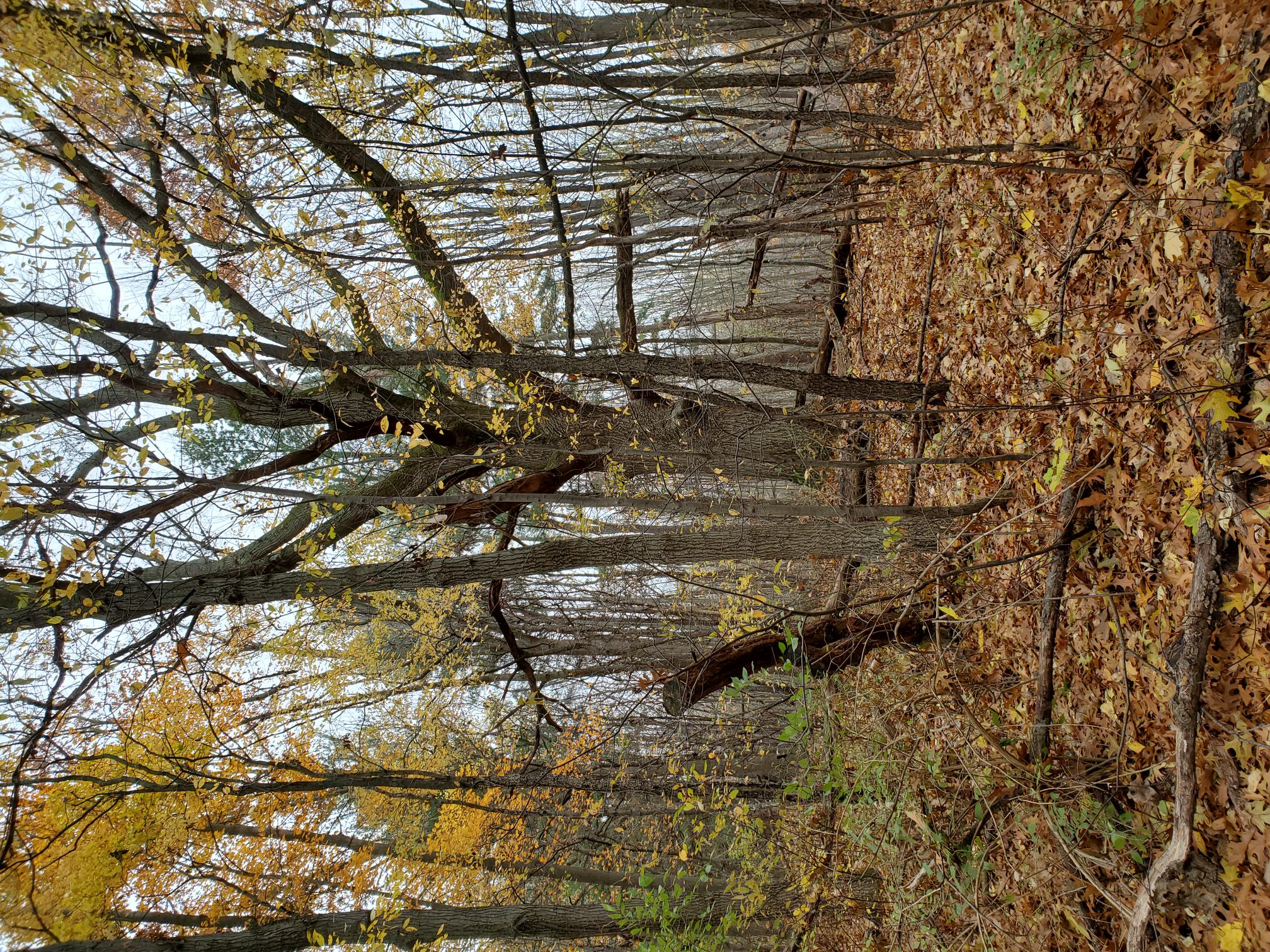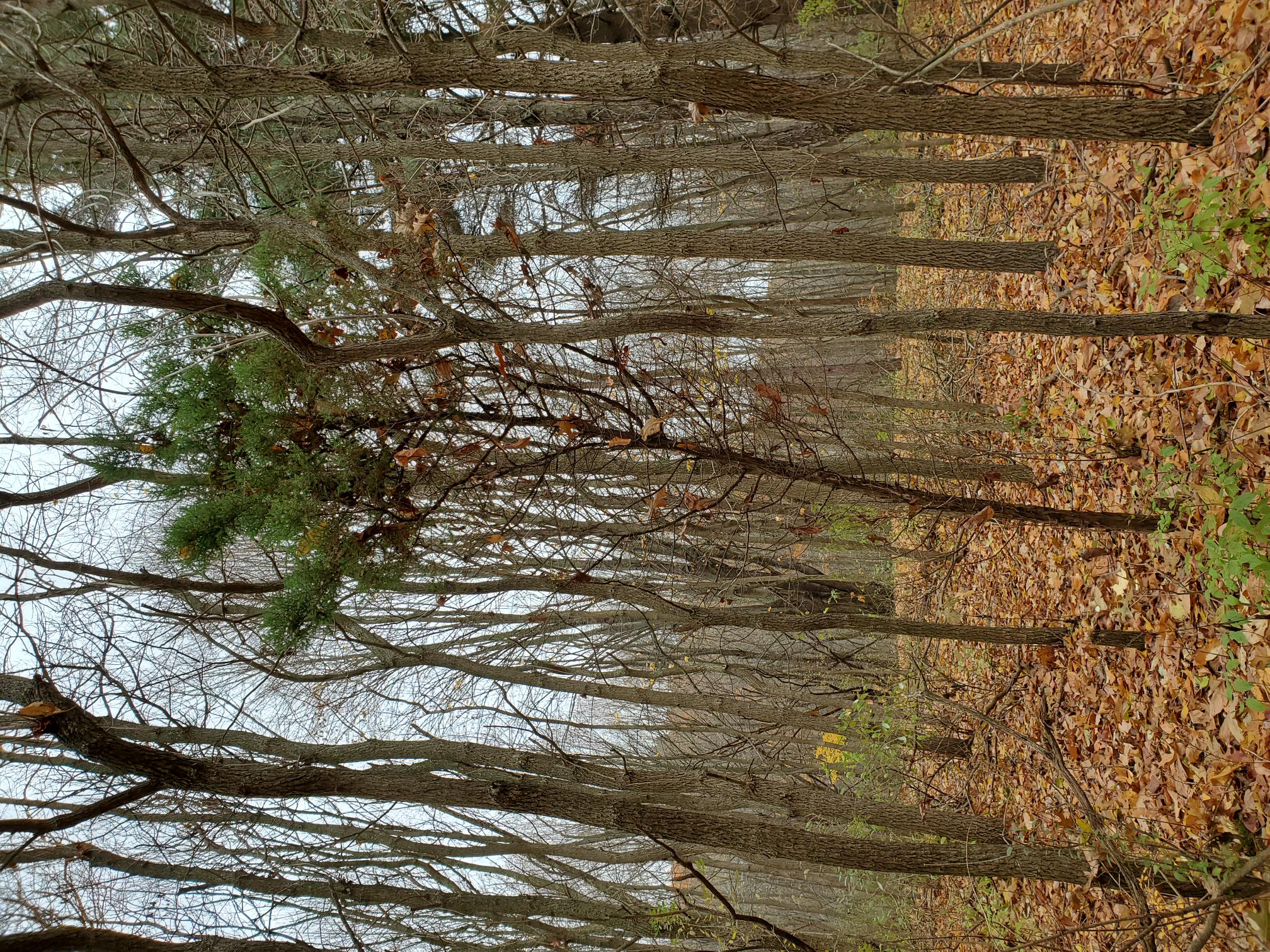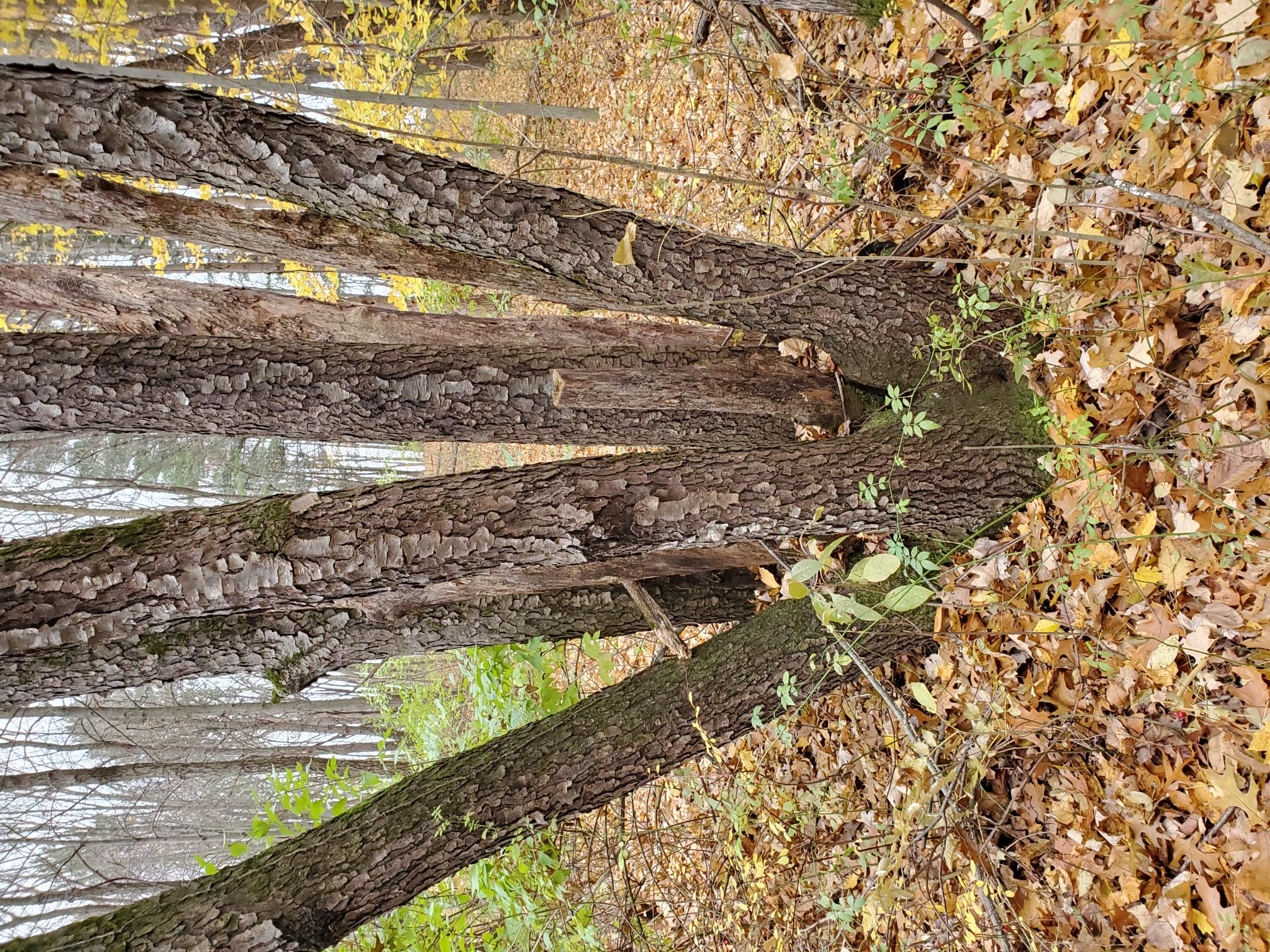Forest forensics
Read the landscape to uncover its hidden past.
By mid-November, the leaves in the forest canopy had mostly fallen, and the few stragglers drifted down in the icy wind and rain. It wasn’t the greatest day for a walk, but it was a great chance to more easily do some detective work. Our little exploration group from Michigan State University (MSU) Extension, Eaton Conservation District, and Michigan Forest Association came together to try our skill at doing some forest forensics—looking for clues on the land to help us understand what human, climatic, and geologic actions shaped the forest as we now see it.
The small 30-acre forest, now part of Oak Ridge Park in Eaton Rapids, was once part of an elementary school’s outdoor classroom. The school closed in 2016, and the land was handed over to the city of Eaton Rapids and Eaton County. Before the school took it on, much of the land was likely part of a farm. How do we know? A few clues led the way.
It all began nearly 10,000 years ago, when the retreating glaciers left different landforms behind, including soils that ended up supporting rich and diverse forests. The glaciers also left behind small depressions, called kettles, that ended up filling with water and becoming ponds and/or wetlands. Evidence of these glacial effects can be found even today by going to the Natural Resources Conservation Service’s Web Soil Survey. The site offers digital maps of the distribution and types of soils in any given area. For the Oak Ridge Park forest, we can see that the soils are generally loamy, which suggests that European settlers may have seen this land as generally good for crops or livestock.
How do we know the land was probably used for agriculture in the past? There are several clues to look for. One is to look for any trees that seem to be very different from the surrounding forest. For example, we found several very large, spreading oak trees that appear in a line across part of the forest. These are sometimes called ‘wolf trees’ because they take up so much space. They are remnants of trees that grew along a fencerow, when they had a lot more open space to spread out.

Another tree that we found in the forest that seemed out of place was a small Eastern red cedar (Juniperus virginiana). This species depends on lots of sunlight to grow, and it’s now being shaded out by its neighbors. So how did it get there to begin with? This tree either was planted, or established itself, when the land was much more open, perhaps as pasture or part of a hedgerow.

Finally, we ran across trees where several trunks are growing from the same base. Some trees can grow new shoots from cut stumps, and each of those new shoots can grow into maturity. These multi-stemmed trees are often a sign that a previously forested area has been harvested, and another clue that this land was much more open in the past.

Would you like to learn more about this fascinating topic? Tom Wessels, an author and forest explorer from the Northeastern U.S., has written a book on the subject: “Reading the Forested Landscape: A Natural History of New England,” with a companion field guide titled “Forest Forensics: A Field Guide to Reading the Forested Landscape (The Countryman Press, Woodstock, Vermont).”
Pre-recorded webinars on this topic for Michigan can be found on the Upper Peninsula Land Conservancy’s website as part of a series co-hosted with Michigan State University Extension.



 Print
Print Email
Email




